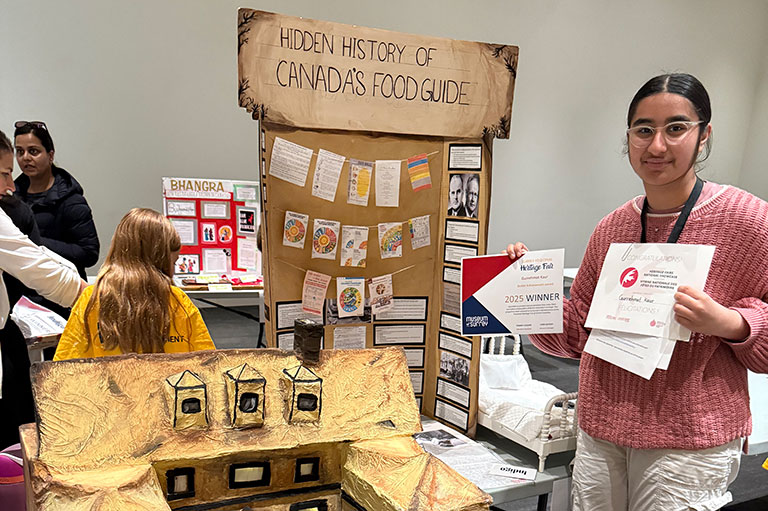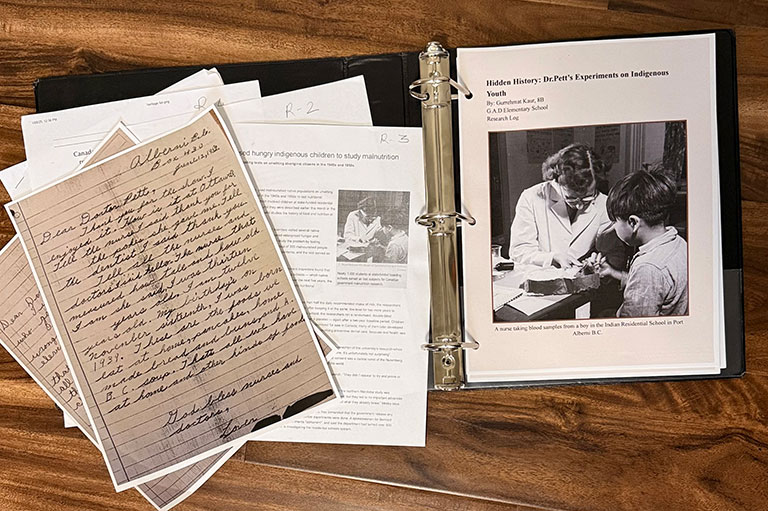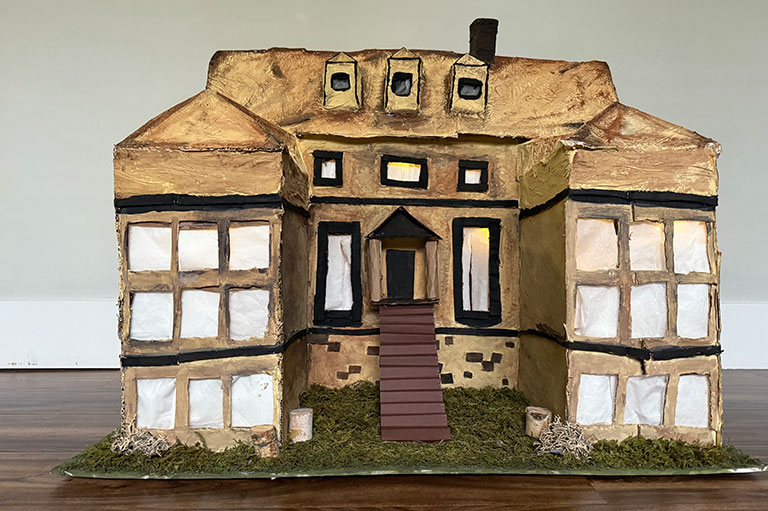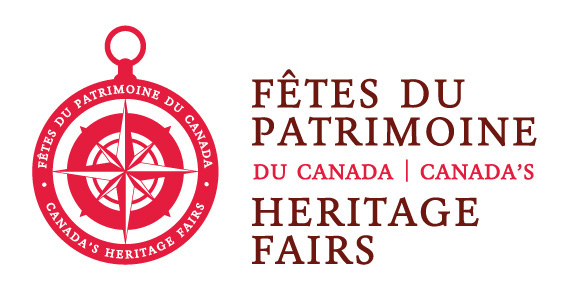Gurrehmat K.

The Dark history of Canada’s Food guide: Dr.Petts’ Experiments on Indigenous Youth
Gurrehmat K.
Surrey Regional Heritage Fair
Surrey, BC
In the 1940s, the Canadian government found out that kids at residential schools were facing malnutrition caused by not enough or low-quality food. In 1941, the Nutritional Services Division was established, led by Dr. Lionel Pett. Dr. Pett had wondered about questions revolving around nutritional intake. He thought he would never get the answers to those questions because finding the answers would mean conducting experiments, which would not be allowed, but in 1947, Dr.Pett was conducting experiments on around 1,000 indigenous children throughout six residential schools. These experiments were cruel and disgusting. Children would be starved and given only certain amounts of milk or other foods. Along with this, antidotes for tuberculosis and surgical procedures were tested on these children. These experiments hurt these children physically and mentally. They were used as lab rats, and their importance and needs were ignored. The experiments led to long-term issues like PTSD, Diabetes, and much more.
As for the conclusion, I found the answer to my inquiry question. The experiments were absurd and cruel (I have mentioned details in my project), and there were no consent forms given to parents; the people who had these children did not know about their kids' suffering.
What sources and evidence did you consult for your project? What different perspectives did they provide on your topic?
Unfortunately, there aren’t any books on this topic, but only a handful of articles and reports. Many survivors tend to stay hidden and talk about their experiences anonymously. Though research was a bit difficult, I managed to get as much information as possible. I used articles published by credible sources and reports written by the University of Waterloo and Ian Mosby.

What is the historical significance of your topic?
The topic has many historical significances, but most importantly, it shows how Indigenous people were thought of. They were considered to be less than and didn’t deserve rights, freedom, or the right to practice their culture or language. Currently, Canada has many Indigenous associations and leaders across the nation that represent their culture and tell their stories. This shows the development of Canadian society. In today's time, Canada has become a multicultural and diverse place where anyone from anywhere can settle. Though the experiments ended in the 1950’s there were many long-term and short-term impacts. Many indigenous children at the time were physically hurt, deprived of food, and the exploitation led them to die. They suffered an extremely painful death. The children who had survived the experiments after they had ended in 1950 had developed PTSD, Eating disorders, and generational diabetic problems. Some survivors, like Jim White, have had unmentioned surgeries (testing of surgical procedures was also part of the experiments) that removed lungs and kidneys. As the years go by, many changes have been made to the way doctors and nurses practice their work. Cultural sensitivity and ethical concerns have also been looked at to make sure everyone is given proper medical attention.
Why did you choose this topic?
Growing up, my parents always wanted me to learn my history and roots in Punjab. I grew up learning about the Sikh Empire, the many famous and infamous kings, the rich culture, the genocide, and the inequalities my people faced. My grandfather was there to witness the doings of Operation Blue Star (when the Indian Army had attacked the Sikh holy temple, the Golden Temple), so he had told me the details of the incident. The crying. The screaming. The pain, not the one the people inside were facing, but the pain of the people who had family inside the golden temple. The innocent women, men, and children of my community had been killed for being themselves. When my parents immigrated to Canada, they hoped for a better start, a place where they wouldn’t have to hide. But just because they weren’t the ones being killed or thrown into absurd experiments didn’t mean it hadn't happened. Though I never got the chance to stand up against the people who hurt my community, I want to help those I can in a free country. I wanted to help spread the stories of those young kids who never got to go back home and hug their fathers or eat their mom home home-cooked meals.
 Model of a residential school created by Gurrehmat.
Model of a residential school created by Gurrehmat.

